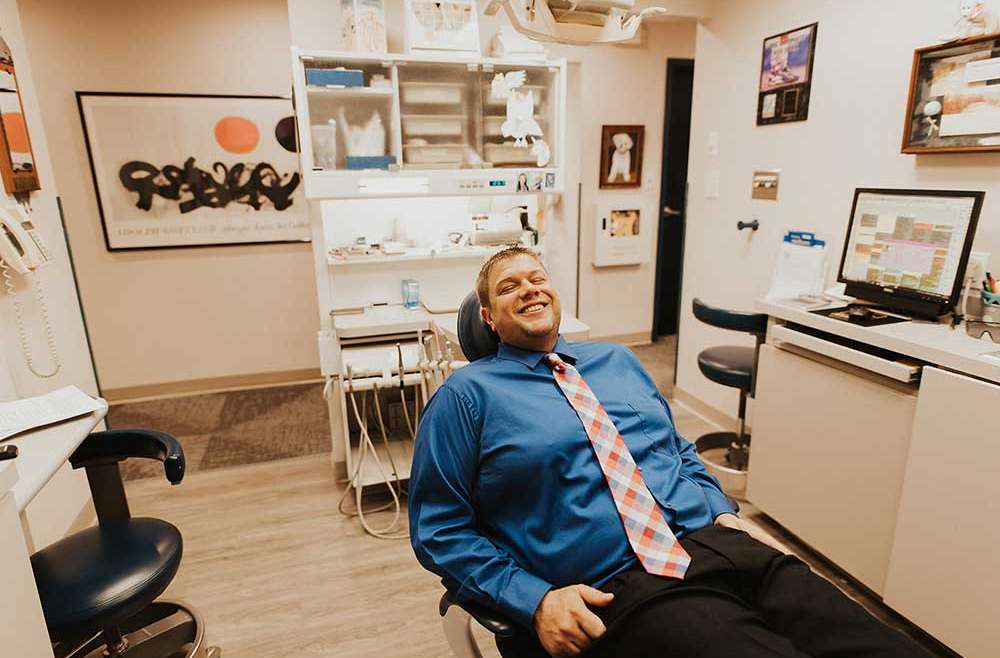No one wants a cavity, but for 92% of Americans between the ages of 20 and 64, tooth decay has resulted in one.
And though there several options when it comes to filling a cavity, many patients with older cavities likely have silver fillings, have amalgam fillings. For most of them, the solution is or was a filling. If that rings true for you, and your fillings are fairly old, they’re likely made of amalgam, or what we often consider “silver” fillings.
Despite the name, these old silver fillings are typically made from from amalgam, a filling material that has been used for centuries. For a long time, amalgam was the filling of choice — it was affordable and durable, often lasting 10 to 15 years. Over time, however, new technology has made created new, more effective, safer, and even less painful ways to fix damaged teeth.
But what if you have old silver fillings? Is it okay to keep them or should you consider replacing them?
Are Old Silver Fillings Safe?
If you are concerned about your old silver fillings, the first thing you should do is schedule trip to your dentist. There, he or she can thoroughly exam your existing cavities and help you decide what’s best.
There are, however, some good indicators that it’s time to consider replacement.
Compromised tooth foundation:
When you go to the dentist to have a cavity filled, one of the first things he or she will do is use a drill to remove the decayed portion of your tooth. Once the cavity is cleaned, your dentist will fill the tooth, but the process can vary based on the type of filling.
Amalgam does not bond directly to a tooth, and so this often results in the need for “undercuts,” or additional drilling to create a space in which the filling will stay securely in place. In some cases, depending on the location and severity of the cavity, this can damage the foundation of a tooth and set you up for problems down the road.
One of the newer, more popular fillings is composite resin. This type of filling will bond directly to your tooth and is similar in color to your existing tooth. Because it bonds directly to your tooth, there’s no need for undercutting and drilling is minimized.
If you original filling caused foundational damage to your tooth, your existing silver fillings may lead to further damage down the road.
General wear and tear
Your teeth put in a lot of work each day. The older you get, the more they become prone to wear and tear related problems. The same is true of your old silver fillings. Over time, chewing as well as grinding or clenching your teeth can cause the amalgam filling to separate from the surrounding enamel.
This can be a gradual process that allows bacteria and food particles to slip through cracks or breaks. Over time, this can lead to further decay or even infection.
Similarly, if the foundation of your tooth was damaged when the initial filling was put in place, this wear and tear can continue to weaken the remaining tooth.
If your fillings have started to show signs of significant wear and tear or damage, then it’s likely time to consider replacing them. This is particularly true if you’re experiencing pain or increased sensitivity at the cavity sight.
Amalgam fillings and mercury
More and more dentists are moving away from amalgam fillings and choosing composite resin fillings. As mentioned above, this type of filling is less noticeable and limits unnecessary drilling. Appearance and efficiency aren’t the only reason for the switch, however.
Another reasons some dentists are choosing not to use these old silver fillings is the materials used to make them. Amalgam fillings contain a mixture of various metals, including silver, tin, copper, and liquid mercury. And as you may be aware, mercury has been linked to some health problems.
In the dental environment, this can cause concern the patient — especially those with mercury sensitives — as well as the dental professionals who consistently handle the substance.
After reviewing available research, the FDA considered the amount of mercury in amalgam fillings to be low. And today, amalgam fillings safe for adults as well as children 6 years or older. However, they continue to investigate the overall safety of this particular filling and have assembled an advisory committee to further research the impact of mercury in dental procedures, among other things, as recently as November 2019.
Should I have my old silver fillings replaced?
Though there is no specific research that shows replacing old silver fillings is essential, anyone who is concerned about the materials used in silver fillings may also want to consult their dentist about replacement options.
Old fillings that are still firmly intact and are free from signs of deterioration, like cracks and fractures, are likely fine for the time being. On the other hand, if your fillings exhibit signs of significant wear and tear, your teeth can be vulnerable to further decay and infection. In that case, it may be best to consider replacing your old fillings with a composite or an alternative filling.
Your oral health is important to your overall health, and even though you may not have any new cavities, it’s important to keep existing ones in mind.
Years of use can break down old fillings and lead to painful problems down the line. Not sure what to do? Dr. Gary M. Nataupsky and Dr. Jason G. Nataupsy can help. With years of experience and a focus on up to date density, they provide you with the best feedback and, if you do need to replace some of those old silver fillings, they can help you determine the best past forward. Call the office today to discuss your options.


